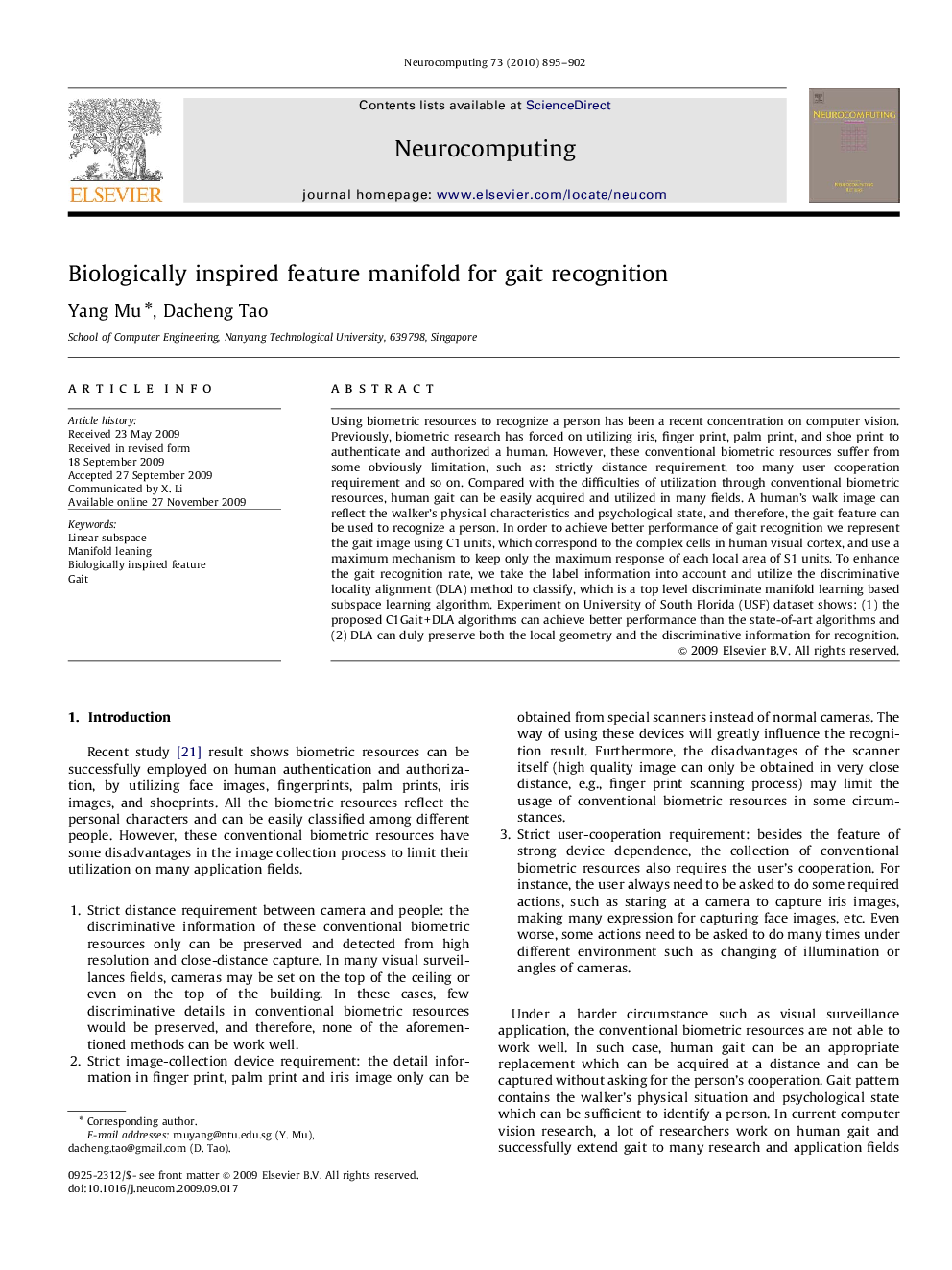| Article ID | Journal | Published Year | Pages | File Type |
|---|---|---|---|---|
| 408676 | Neurocomputing | 2010 | 8 Pages |
Using biometric resources to recognize a person has been a recent concentration on computer vision. Previously, biometric research has forced on utilizing iris, finger print, palm print, and shoe print to authenticate and authorized a human. However, these conventional biometric resources suffer from some obviously limitation, such as: strictly distance requirement, too many user cooperation requirement and so on. Compared with the difficulties of utilization through conventional biometric resources, human gait can be easily acquired and utilized in many fields. A human's walk image can reflect the walker's physical characteristics and psychological state, and therefore, the gait feature can be used to recognize a person. In order to achieve better performance of gait recognition we represent the gait image using C1 units, which correspond to the complex cells in human visual cortex, and use a maximum mechanism to keep only the maximum response of each local area of S1 units. To enhance the gait recognition rate, we take the label information into account and utilize the discriminative locality alignment (DLA) method to classify, which is a top level discriminate manifold learning based subspace learning algorithm. Experiment on University of South Florida (USF) dataset shows: (1) the proposed C1Gait+DLA algorithms can achieve better performance than the state-of-art algorithms and (2) DLA can duly preserve both the local geometry and the discriminative information for recognition.
